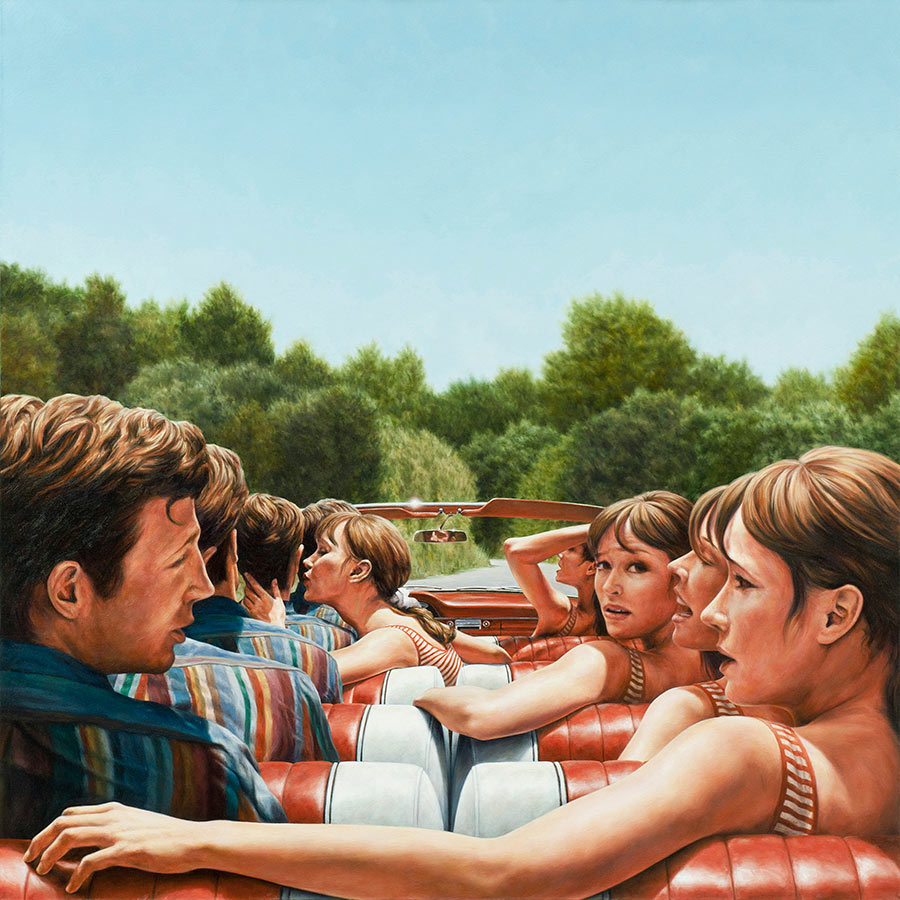Studio Visit: Angel Otero
Instinctual layered paintings driven by process

As soon as you enter Puerto Rican artist Angel Otero‘s Brooklyn work loft, the intense smell of paint nearly stops you at the door. Shelves housing copious tubes of oil paint and rows of Montana spray cans lining the back walls allude to the strong odor, but it’s the stacks of work drying on wooden pallets surrounding the space that are really the culprit. But the extraordinary aroma is actually the upshot to Otero’s distinct artistic technique, one which involves an extensive process of building up layers of paint on plexiglass before methodically scraping them off.
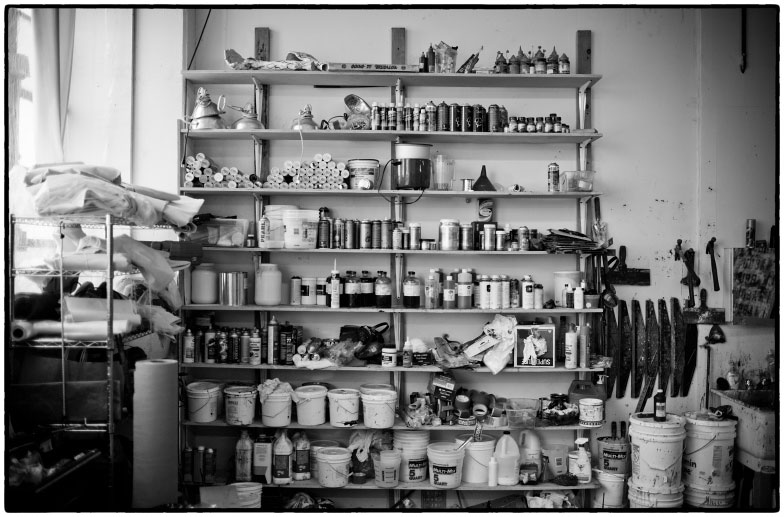
“I’ve always been intrigued by process,” says Otero. The artist, who received his MFA from the School of the Art Institute of Chicago, typically allows materials to inform his work. While there is substance to his paintings, he’s not driven by the challenge of depicting a personal narrative. Instead his work reflects his ambition in taking painting to another level and his ability to work successfully off of sheer impulse.
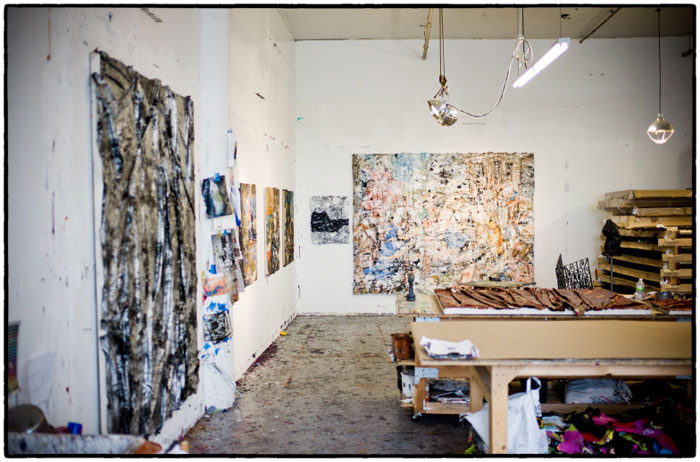
“The process kind of starts with usually me painting on plexiglass,” he says. “After I do the painting, I cover it with more oil paint, the whole thing. And then I do more layers of oil paint. Then eventually it goes to the floor and I cover it with a black color, a pigment of oil paint. The pigment of black is the most rubberish one. Pigments come from rocks, so that means they are all different types of materials which dry differently toward the different oil mediums. Black is the one that when it’s dry, stays the most malleable. So the last layer of all the paintings I do, I cover with black—a thick layer of black—and then they go to dry.
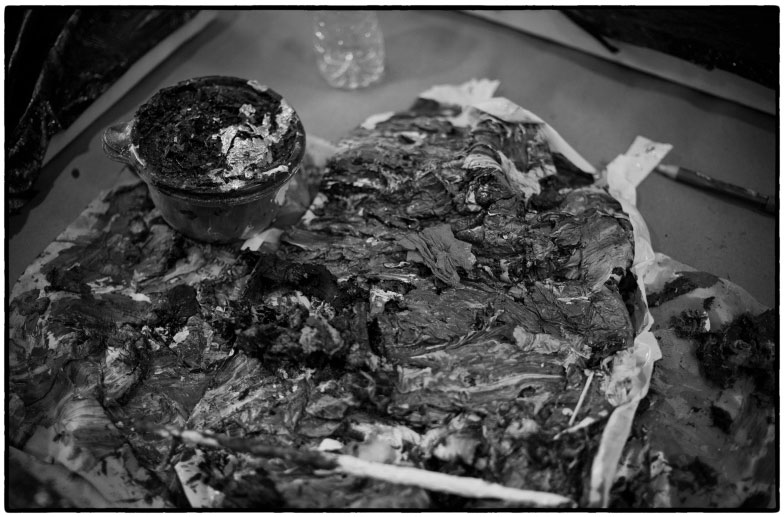
Otero initially came to this process by recycling paint as a way of saving money and resources while he was in school. He would scrape the paint off works he was dissatisfied with and add it to a growing mountain of remnant oil paint. Eventually, he started to form the clumps into flower shapes and spray paint them silver, which on the canvas created the illusion of working with tin foil. “From there it developed slowly, in some way,” he explains. “But it felt good because I was using a material that I wanted—oil paint—and at the same time I had found a great process that is pretty unique, and whatever I do, people are going to be more attracted toward ‘how did you do it’ rather than ‘what is it about’?”
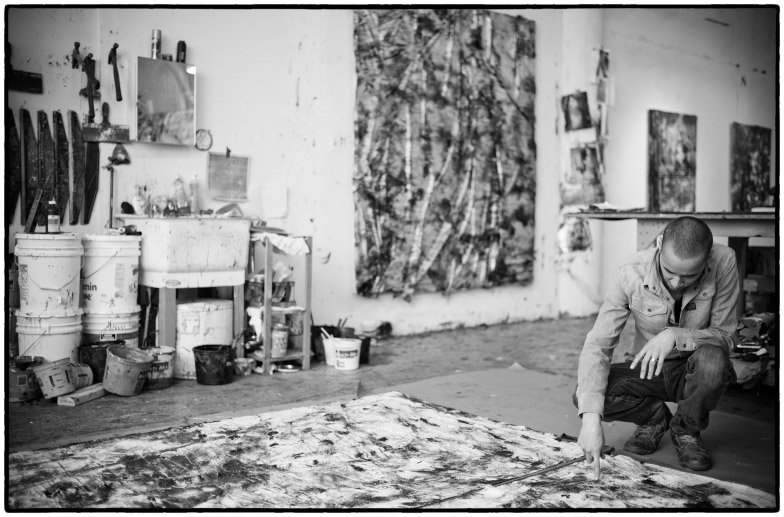
While this was an important stylistic shift for Otero, it also laid the foundation for what would become his signature technique of creating oil skins on glass. After his mountain of dried paint diminished, he began putting paint in glasses to dry. He noticed, when reusing the glasses for the first time, that some of them were stained from the paint before it. “When I scraped that second layer, I noticed that it transferred the stains. I was like, ‘oh shit, I could paint on glass, cover it with paint and then scrape it, and I would have a full sheet of paint that would have the painting that I did'”, he reveals.
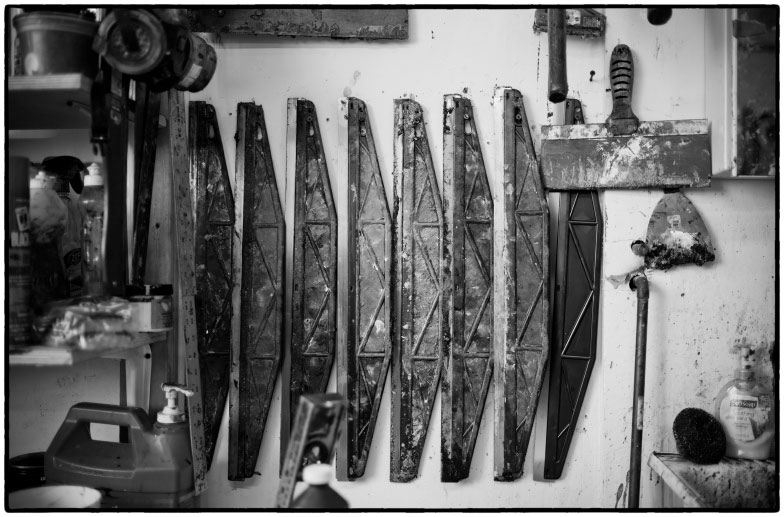
After several experiments Otero found specific types of oil paint that he could combine that would give him the tactile surface he desired, and one that would last for a long time. Once that process of strategically scraping layers of paint off of glass inch by inch using doctor blades was in place, he was able to begin playing with the leather-like layer of dried paint. After applying a thick layer of epoxy to a canvas, Otero and his two-person team would transfer the heavy skin to the canvas and begin folding in loose wrinkles.
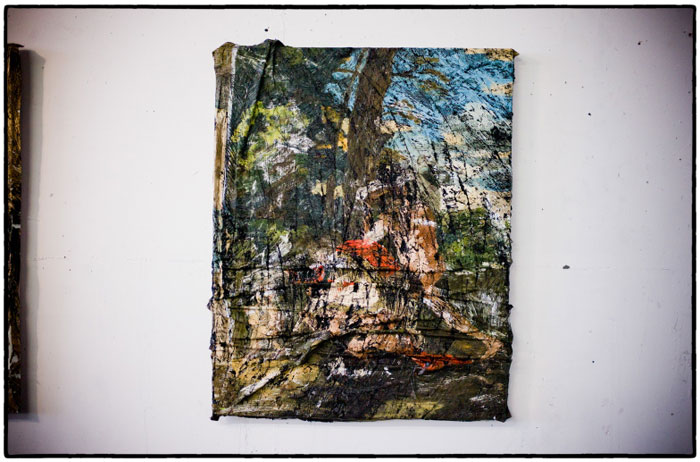
Although his style is certainly contemporary, Otero is interested in experimenting with compositions that contrast the old with the new. He will recreate a work by French classicist Nicolas Poussin, painting it to detailed perfection on glass. Then he covers the painting in more oil paint that “will eventually be the background”, lets it dry, possibly repeats this step and then begins scraping the skin off the glass in a way that exposes the various layers at different points in the composition. In this way, the painting becomes almost like a print or a collage.
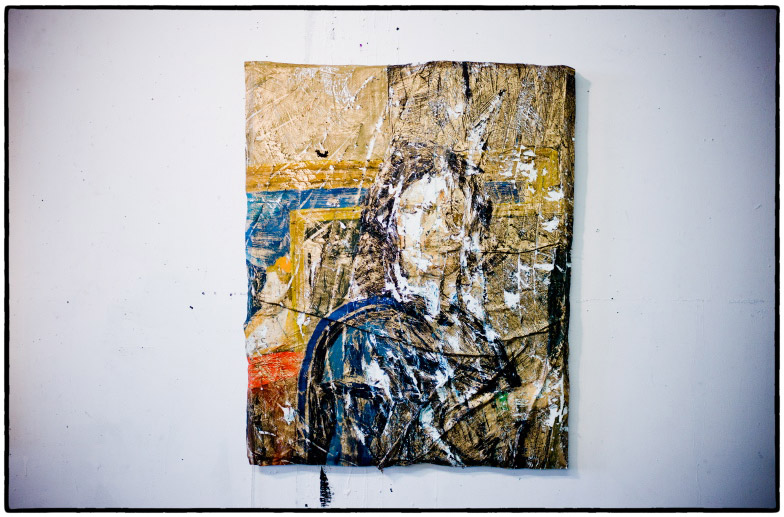
Otero’s approach has been attracting attention since his days at art school. Having honed his technique with confidence, he is able to keep experimenting—both with painting and his second love, sculpture—producing works that are meaningful in both appearance and form.
His latest body of work will soon be on display at Istanbul ’74, his first solo show in the Turkish metropolis. The exhibition, put on in partnership with NYC’s Lehmann Maupin Gallery, opens 23 February 2012 and runs through 17 March 2012.
Photos by Image Agency. See more images of Otero’s studio in the slideshow below.








